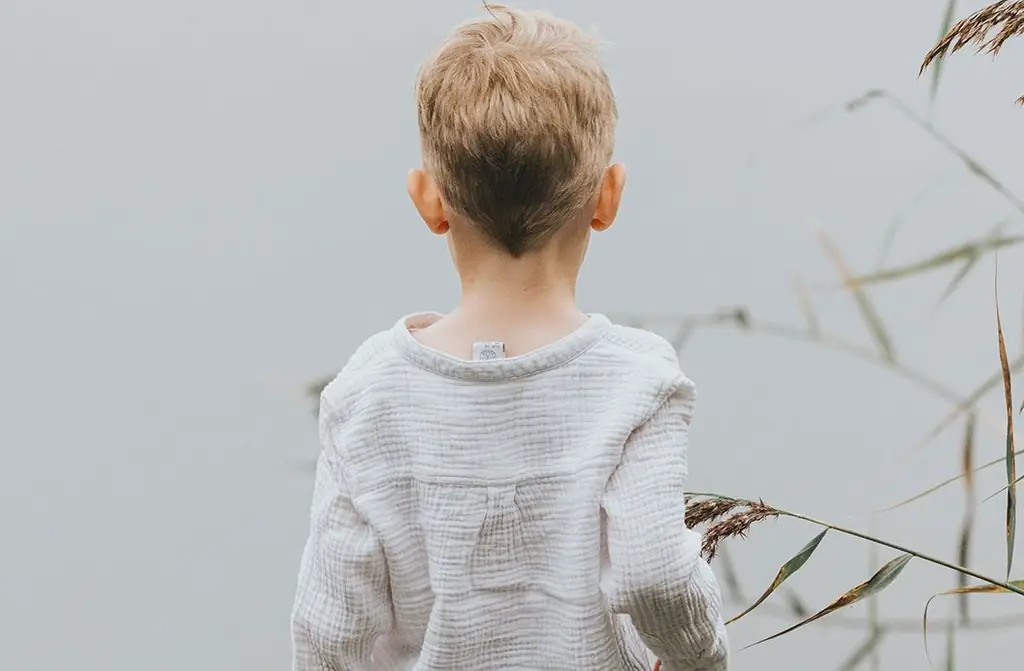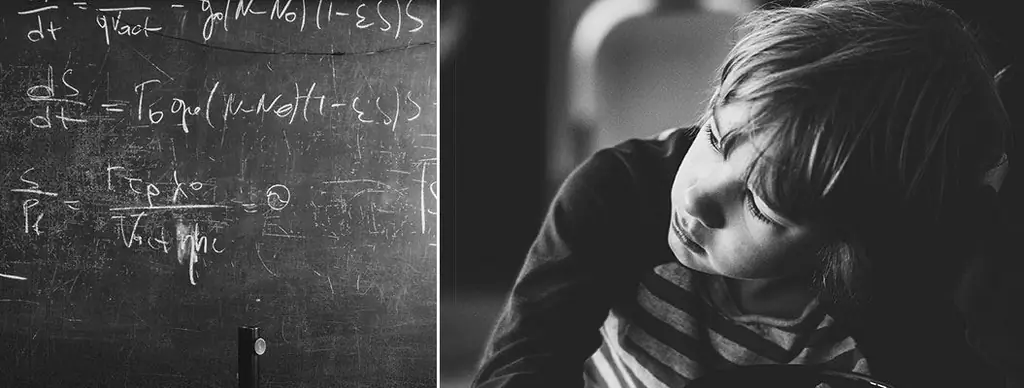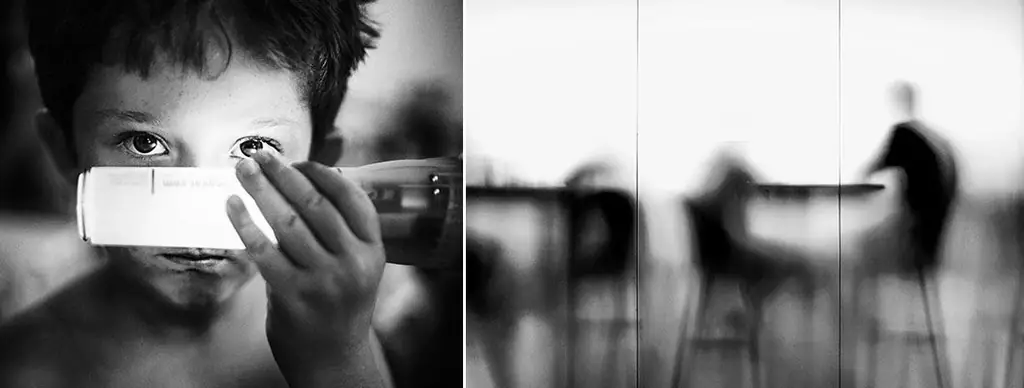- Author Adrian Jeff [email protected].
- Public 2023-12-17 05:06.
- Last modified 2025-01-24 14:09.

Teaching children with autism
Ideally, I would like to bring the child to a fulfilling life among other people. But there is a lot of confusion here too. Autistic children are so commonly considered "special" that few people can guess where and in what the child's talent will be manifested, in what area to direct his development. What is the potential for his place in society …
The questions are answered by Evgenia Astreinova, a psychologist, she works with autistic children 11 years old individually and in groups
- What is the best way to organize education for children with autism? What conditions need to be created?
- Since we are talking about studying, let's take a simple analogy. We want to take the child from point A (his current state and development) to point B (to achieve the desired result in development and social adaptation). You ask how you can guide the child. But the problem is that professionals and parents often lack simple initial data: where we start from and where we want to go.
Item A. Current state and level of development. We must clearly understand what is behind this or that child's behavior. If he evades contact or does not withstand it for long and with difficulty, then what is the reason? What is behind the other symptoms - what causes aggression, obsessive movements, and so on? Only in this case there will be an understanding of what conditions are needed for the child to overcome the problems and successfully adapt the educational process.
Item B. Learning objectives for children with autism. Ideally, I would like to bring the child to a fulfilling life among other people. But there is a lot of confusion here too. Autistic children are so commonly considered "special" that few people can guess where and in what the child's talent will be manifested, in what area to direct his development. What is its potential place in society in general? For healthy children, this can be assumed based on the hobbies and inclinations of the baby, even at an early age. But with an autistic person it is different - the outwardly manifested circle of his interests can be extremely narrow and specific.

Only when there are answers, where we start from and where we want to come, then it is possible to outline the "trajectory of movement". That is, choose certain forms of training, ways of presenting material, etc.
- How do you find answers to these questions for yourself?
- The foundation is the knowledge that I received at the training "System-vector psychology" by Yuri Burlan several years ago. This has significantly changed my work with autistic children, made teaching children with ASD more effective.
The main, key point in this is a clear understanding of who autists are. These are traumatized and retarded owners of the sound vector. By nature, they are given a particularly sensitive hearing, a subtle perception of various sounds and meanings and intonations of speech.
A child with these qualities is born an absolute introvert. The desire to "go outside", to listen to the world arises in him only if the external environment causes pleasant sensations. This is soft speech and benevolent intonation. Quiet classical music, sounds of nature.
And vice versa, quarrels and screams of adults, loud and heavy music, strong noises cause severe pain to the developing psyche of the sound engineer, traumatize him, delay his development. In recent decades, we have seen a dramatic increase in the number of children with autism. This is not an accident, but a natural consequence of the world in which we live today.
The background noise level has increased significantly. Every passing car, constantly operating household appliances (hair dryers, vacuum cleaners, microwave ovens, etc.) create a total constant high load on the hearing analyzer. The owners of the other seven vectors are able to adapt this, but small sound people, due to the special sensitivity of hearing, not always.
Add to this the constant stress of parents who have found it very difficult to survive and raise their children in the face of constant competition for a place in the sun. We can see that, in general, people have become more nervous, complain of chronic fatigue, and can hardly bear even everyday stress. Naturally, they are more likely to “cry out,” especially at home, in a family, where we all come to rest after a hard day, which means that we have less control over ourselves than at work.
All of this, combined, causes enormous damage to sound children. And the number of autistic people is growing like an avalanche every year. To help a particular child overcome his main problem (immersion in himself, unwillingness to make contact), we, first of all, must create conditions for him to be protected and safe. That is, such an external environment in which he will have a natural desire to listen to the world.
- How to implement this when teaching children with autism? What conditions should be in the classroom?
- It depends on the current severity of the child's condition. If he still has difficulty fulfilling requests, poorly understanding speech, reacts with protest or shouts to attempts to establish contact, then maximum sound ecology is required. The class should be perfect silence, without extraneous sounds. You need to speak with your child in lowered tones, softly and as briefly as possible, simplifying speech.
It is good if there is an opportunity to add music lessons, at least at the initial stage of teaching children with autism. They have not only a sensitive, but also an excellent ear for music, sometimes absolute. At first, it is easier for a child in a serious condition to distinguish the sounds of music than speech. And tasks where you need, for example, to determine the high-low sound, long or short, gradually form the skill to listen carefully. This will certainly give its result in the fact that later the child will better listen to the speech, focus on it.
Naturally, the educational process itself will not give anything if the appropriate conditions are not created at home. For parents, I recommend minimizing any household noise. Talk to your child briefly, softly and clearly. You can sometimes turn on classical music in a quiet background when the child is resting or playing himself. If possible, it is good to go with your family to the country house or somewhere out of town on the weekend. This will allow at least a couple of days a week to remove the high noise background of the metropolis from the child.
- What about social rehabilitation of children with autism? If you constantly protect a child from traumatic influences, then how can he live in the real world?
- No way. Therefore, there is no such task for a child to live and develop all his life only in a certain “ideal environment”. Social rehabilitation of children with autism is always a balance between “develop” and “do no harm”. You need a very good psychological competence for both specialists and parents in order to subtly feel the moment when the child has already adapted the current level of load and is ready to move on.
Ideal sound ecology is needed at the initial stage. An injured child needs time to begin to perceive the external environment as consistently comfortable and pleasant for himself. When it becomes noticeable that the number of shouts or other protests is decreasing, the child willingly makes contact, better and more easily understands the speech of the teacher and parents, this is a signal that social tasks can be gradually complicated.

For example, start bringing the child to separate classes in the general school class. For starters, those where concentrated listening is not required - since the background noise of a large team will already be a high load. A lesson in drawing, labor, etc. will do. At the same time, outside of school, you can begin to form at least a narrow circle of peers with whom the child can spend free time and play. At first, 1-2 children of someone from family friends and meetings 1-2 times a week will be enough.
The main thing is to correctly and accurately choose the moment when the child is ready for the next step in socialization. Mistakes can be very costly! For example, it often seems to parents that if they place a child in a grave condition in a team, he will "rehabilitate faster". Alas, this often leads to the opposite results. For example, there are even more screams, protests, or the child goes even deeper into himself, ceases to completely perceive the addressed speech.
- What determines the educational program for children with ASD? And how to choose the most suitable program for your child?
- The school curriculum for such a child is determined annually by the psychological, medical and pedagogical commission. FSES provides an opportunity to choose a variety of forms of education. If the child's intellect is fully preserved, then he can be taught individually according to the usual program or even in the general class - with the help of a tutor. For children with mental retardation, there are special simplified programs and the opportunity to attend classes in the general class in part.
The problem is usually not that there are not enough opportunities to rehabilitate the child. The problem is how exactly these opportunities are realized. This is often done without considering the reasons for the child's condition. I will give simple examples that I constantly come across when working.
Example 1. The most unsuitable room for individual work with students at school is chosen - a walk-through room. A lot of people constantly walk through it, they talk, slam doors, etc.
It is clear that in such an environment, a child who is a sound specialist, especially one who has traumas and developmental disorders, is simply not able to concentrate. When, at the end of the year, he is brought to the commission again, they state the fact that the child has not mastered the program. However, the point is not in the program - perhaps this program is quite within the reach of the child. The conditions were simply not created for him to successfully adapt it.
Example 2. The room for individual work was chosen well - separate, spacious, bright. But for some reason (perhaps just a lack of space), three teachers work individually with the students at the same time, each in his own corner of the room.
There is simply a "sound porridge". Considering that it is always more comfortable for a child to listen to sounds that are louder than loud sounds, in this situation he will perceive distant "foreign" speech better and clearer than the speech of his own teacher. Concentration on the subject being studied gets lost. A child will not be able to study normally in such conditions.
Example 3. The most frequent and simplest. Each of us has his own structure of the psyche and sees the world "through himself." And very often the teacher gives information to the student in a completely different way than the child needs it. For example, a teacher is an emotional person, he sincerely tries to involve the child, demonstrates a whole palette of emotions. But such a presentation can, on the contrary, repulse a sound child in a serious condition.

In addition, the sound vector, although defining, dominant, is not the only one in the structure of the autistic psyche; the properties of one or more vectors must be added to it.
Suppose the child also has a skin vector. These children are restless, and in autism they can be very "disinhibited". Jump up, run away, show a lot of obsessive movements. If the natural characteristics of the teacher coincide with the properties of the student, then the teacher "through himself" will guess that it is necessary to periodically do warm-ups with the child. To convey some of the information through movement. Change the types of activities, the form of presentation of the material more often.
And if the mentality of the teacher is completely different? For example, he believes that the correct presentation of information should only be consistent. That a child, standing or jumping, will not learn and understand anything (as he himself would not understand). This is the wrong conclusion, it is built on its own perception of reality. By imposing on the child that form of presentation of the material that does not suit him, the teacher will not be able to achieve a good result. Even if he is a well-meaning specialist and wants to help with all his heart.
The same situation can arise at home with parents. Until we have psychological competence, the ability to see another as he is, we can unwittingly cause damage or simply struggle with no results over an unsolvable problem of how to help a child.
- How do you define educational goals for children with autism, based on their mental characteristics? Does this knowledge allow us to see what and how such a child could take place in the future, what place in society to take?
- Yes of course. Each vector has its own innate talents, abilities, inclinations.
For example, there are many natural inclinations in the sound vector, which, if directed in the right direction, can become a thread to the socialization of an autist. This is musical talent (good ear for music). With a sufficient development of the intellect - a writing talent (many are well acquainted with the phenomenon of Sonya Shatalova, who, with a severe form of autism, writes excellent philosophical essays). Sound engineers can also realize themselves well in programming. Owners of a visual-sound combination of vectors - in web design.
In addition, each of the vectors given to the child adds other talents and characteristics to him. So, carriers of the skin vector can, with proper development, realize their engineering and design talent. The owners of the anal vector - their talent for systems-analytical thinking.
All a child needs is the psychological competence of adults. Parents and professionals. It can be fully obtained at the training "System-vector psychology" by Yuri Burlan.
When it comes to a preschooler (up to 6-7 years old), it is enough for the child's mother to undergo training - and the diagnosis is removed from the child. There are such cases. At an older age, there will also be positive changes. The degree of their severity depends on the initial severity of the child's condition and his age.
For specialists, the importance of this knowledge cannot be overestimated at all. This is a fundamentally new level, a breakthrough in work and a much higher efficiency of results.






